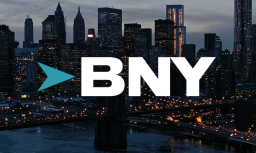Missing Pieces: What the Pundits Get Wrong About the DOJ Debit Interchange Lawsuit Against Visa

After listening to and scrolling through days of “expert” commentary about the lawsuit filed by the DOJ against Visa over debit interchange, I feel compelled to weigh in.
Big headlines about big companies — especially concerning DOJ allegations of anticompetitive behaviors and lawsuits to signal they really mean it — bring everyone and anyone out of the woodwork. Social media gives everyone and anyone a platform to say anything they want.
Facts seem to be an inconvenient detail.
But between a comment made on one of the morning news shows about Visa (as in, Visa directly) passing $7B in debit interchange onto consumers — which went unchallenged by the show’s hosts — and the unsolicited pitches and public commentary by FinTechs who’ve built their businesses on top of Visa’s rails and are now piling on, it’s time to get a few basic facts on the table.
Facts, specifically, about the claims in the complaint concerning the lack of payments innovation in the U.S. based on Visa’s “moat” and the inability for FinTechs to be successful in developing and scaling alternatives to Visa’s debit network because of that “moat.”
It’s a head scratcher, as anyone who knows this business knows.
Advertisement: Scroll to Continue
| The claims in the complaint against Visa ignore the well-documented explosion of payments innovation in the U.S. over the last decade and a half. |
Both claims ignore the well-documented explosion of payments innovation in the U.S. over the last decade and a half, including the success of FinTechs who have ridden that wave and those rails to massive valuations and spectacular exits.
It’s as if the world has been suddenly taken over by a bunch of Rip Van Winkles who’ve been asleep for the last fifteen years — and think we’re still mainly paying with dollars and coins. Overlooking the fact that the Durbin Amendment, passed in July of 2010, fixed debit interchange fees and required debit card issuers to offer a choice of two unaffiliated processing networks for merchants to route debit transactions.
I’m sure some readers are already about ready to pounce on how payments in Europe are sooo much more innovative. Except they aren’t. Cash is king, especially in some of the big economies such as Germany and Italy.
A recent ECB report put it this way: “But to be clear: cash remains the most frequently used means of payment. More than half of all day-to-day transactions in shops, restaurants, etc. are made using coins and banknotes.”
Time to Wake Up and Smell How Payments Networks Work
There are several claims made in the DOJ lawsuit. I hope you take the time to read it thoroughly — and not the ChatGPT version of it. Much of what is written relates to details about negotiations and contracts about which I have no knowledge, so can’t and won’t address.
I will address the broader context around which those claims are made. Starting with how networks ignite.
Please don’t roll your eyes.
At least four people on a well-known morning show didn’t have a clue. I imagine they are not the only ones. So don’t skip this part. Unless you know it by heart, you’re starting from a fact base that is probably rickety at best.
Because there’s always a middleman. And they never work for free.
It Takes Four (Parties) to Tango
The four-party model has existed for more than fifty years in payments. It’s the model that makes it possible for banks to issue a single card that can be used to pay for something at any merchant that runs over network rails. Acquirers onboard and vet merchants and connect them to terminals and gateways that allow those merchants to accept those cards and be paid for sales made using them.
| The four-party network model also made it easier for merchants and issuers to monetize those payments at scale. |
The innovation, first introduced in the mid-1960s by the predecessors of Mastercard and Visa, was to operate the clearing and settlement rails that kept track of all credit card transactions (and later debit) flowing between all those issuers and merchants each day.
The resulting payments innovation jumpstarted a massive wave of commerce because consumers could use a single card to shop at many merchants. That unlocked a lot of pent-up purchase demand. Merchants benefited because they no longer had to issue and manage their own cards to give consumers an option to use credit to pay for their purchases.
The four-party network model also made it easier for merchants and issuers to monetize those payments at scale. Merchants could plug into an acceptance network that expanded the reach of their own customer base to any consumer carrying a card from an issuer with the Visa logo on the front of it. Merchants and issuers could do that without having to build and operate their own clearing and settlement systems to manage those flows. Mastercard followed Visa eight years later and launched in November 1966.
These acceptance networks remain incredibly valuable to consumers — and to innovators who want to connect their product to merchants with the broadest reach.
But no one does anything for free.
Let’s focus on credit cards, which was the whole game until the mid-1990s.
Getting to Ignition
Getting any network off the ground — and then scaling it safely, securely and profitability — is one of the hardest things to do in the business world. Even people inside of successful platforms, and who weren’t there at the start of them, don’t appreciate the complexity. It just works, and it looks so easy.
The classic platform dilemma always is deciding which side of the platform pays (or subsidizes) the other side of the platform deemed essential for “ignition.” Ignition is a word that we use to mean getting enough momentum to assemble the critical mass that triggers the network effects and scale. It’s never a straightforward answer, and there are always trade-offs.
| Getting any network off the ground — and then scaling it safely, securely and profitability — is one of the hardest things to do in the business world. |
Interchange is the business model that greases the flywheel of the four-party system. Visa (and Mastercard) don’t have direct consumer relationships. They’re B2B brands that provide connectivity across issuers, acquirers and merchants to keep commerce running smoothly. They don’t, and wouldn’t know how, to send an interchange fee payment to anyone.
So, when people claim it is “Visa” that passes the cost of interchange fees to the consumer, they are dead wrong on two counts.
One: Visa isn’t touching the interchange fee, which goes right to the issuer.
And two: The interchange fee isn’t a cost to the consumer. The issuers get the fees and generally pass them along to consumers in the form of rewards and other benefits.
Why does this matter?
Because anyone with the ambition of creating a new payments network needs to figure this part out. Someone has to pay to get the other side to engage and to operate the network.
The middleman you may love to hate today could end up being replaced by a middleman you may learn to hate even more.
And who may end up delivering less.
The Debit Interchange Rope-A-Dope
Now, for the issue at hand, which is debit.
Visa was the first network to introduce the debit card. The year was 1975, and it was called the Check Card. It was intended to solve the massive friction merchants experienced from accepting checks as payment at the point of sale, including fraud and the time it took for checks to clear and settle and funds to hit their account.
It was a big flop.
Consumers didn’t understand why cards were better than checks. They didn’t trust them and didn’t understand how they worked. Twenty years later, in 1995, debit transactions represented only 2% of retail noncash transactions according to the Kansas City Fed. By 2000, it had jumped to 11% and was finally on the verge of taking off.
Debit was Visa’s 25-year overnight success.
| Getting consumers to change how they pay is hard, even if the alternative is better, faster and easier and comes from a brand that consumers already know and trust. |
It took that long because there was so much investment and blocking and tackling required to ignite the network. And funny TV commercials. Even though they were starting from a position of strength with merchant connectivity, and issuers with consumers and checking accounts who could be converted to “check cards.”
But that was then and this is now, you might say.
Yep. It’s also a lesson in how hard it is to start and scale a new network. Getting consumers to change how they pay is hard, even if the alternative is better, faster and easier and comes from a brand that consumers already know and trust.
In 2010, as part of the Dodd-Frank Wall Street Reform and Consumer Protection Act, debit interchange fees became regulated for all but the smallest financial institutions. Merchants insisted that high debit interchange rates forced them to raise prices to the consumer. That a lower interchange rate would allow them to offer consumers relief.
Today, the DOJ seems to think that if debit card fees came down, merchants would just lower prices to consumers. Anyone who has ventured into the physical world of paying merchants should have their doubts. Past is also prologue.
It is well documented that after the debit card interchange fees were slashed, merchants didn’t pass much of the savings back to consumers. And that banks which had used debit card interchange fees to keep depository accounts costs low eliminated free checking accounts and raised fees. Not a win for consumers. But that’s old news.
Here’s the irony of the DOJ complaint.
As part of the Durbin Amendment to Dodd-Frank, merchants were given the option to route debit transactions across any PIN debit network. There are ten of them, including Visa’s Interlink and Mastercard’s Maestro. The DOJ complaint alleges that alternative debit networks, including Mastercard’s Maestro, are unable to compete successfully given Visa’s debit share.
That seems odd, since it is solely in the hands of the merchants to decide how they want debit transactions to be processed.
The lack of volume over alternatives could have something to do with the lack of confidence merchants have in transactions running over those networks. Maybe they aren’t confident that those transactions won’t be falsely declined or have the same level of fraud protection. Many domestic debit networks are unable to process network tokens, an innovation that has increased conversion and reduced fraud for merchants.
| It’s possible that merchants recognize that when it comes to debit processing, you may sort of get what you pay for. |
When consumers are presented with the option at the point of sale to pick Visa versus an unaffiliated debit network, they are (a) mostly wondering why they need to pick one and (b) most likely choose Visa since it seems safer. Maybe even less sketchy.
Visa innovated the notion of tokenized credentials when creating the virtual card provisioning requirements for Apple Pay a decade ago. Tokenized credentials were an important digital payments breakthrough that ignited mobile wallets and online commerce by making checkout and recurring payments more secure and seamless. That innovation was provided free to merchants who used Visa’s rails to process transactions.
It’s possible that merchants recognize that when it comes to debit processing, you may sort of get what you pay for. That they take a risk in alienating a customer over a false decline or opening themselves up to fraud, so they stick with what works, even though they could switch. Even when the cost of doing so is cheaper.
Alternative debit processing networks need to innovate — and invest — to make their rails more attractive to merchants. If they really want to compete, they shouldn’t wait for some other entity to make it happen and then complain once they do.
Now Playing in Payments: The Woe is Me Soundtrack
In 1973, Stephen Sondheim wrote the soundtrack for the musical A Little Night Music. The hit song from that musical was “Send in the Clowns.” That song begins with the lyrics, “Isn’t it rich,” intended as an ironic commentary on the life and fortune of the main character, which was anything but.
“Isn’t it rich” was my reaction after reading the several references to PayPal, Square and Apple as aggrieved parties in the DOJ complaint. Those references allege that, in different ways, each has been prevented from creating their own alternative networks and blame Visa for getting in their way.
Take PayPal.
The DOJ complaint references their 2016 deal with Visa to more easily enable PayPal users to register a Visa card in the wallet.
Let’s step back.
In 2015, PayPal’s market cap was about $38 billion. Although consumers could register a credit card to their PayPal wallet, PayPal strongly encouraged consumers to connect and pay using their bank account credentials. They were interested in monetizing the spread between collecting fees charged to the merchant and the cost of processing an ACH payment. Once a consumer reached a $10,000 spending limit using their PayPal account, it was bank account or bust.
In 2016, Visa and PayPal agreed that it would be easier and more visible for PayPal users to attach their Visa card to the wallet in exchange for access to Visa’s tokenization capabilities. That turned out to be pretty important, even though PayPal’s margins would be lower. An agreement with Mastercard soon followed. Consumer usage of the PayPal account took off.
In 2015, the average PayPal user had 27 transactions per year, about two a month. Two years into the new contract, that number had increased to 36, or three a month.
In 2018 — just two years after that announcement — PayPal’s market cap had nearly tripled to $102 billion, making it more valuable than Amex at the time. (They were $92 billion).
Then there’s the Square allegations.
Square is a $41 billion market cap company that wouldn’t exist without consumers carrying Visa (or Mastercard) products in their wallets. As is well known, Square was able to build its network on the back of the card networks because they could spend zero money getting the consumer side on board. Their innovation was the business model and white plastic dongle that turned a mobile phone into a point-of-sale terminal for merchants who wanted to be paid using the cards consumers already had and liked to use.
Square’s Cash App, an alternative banking product that also runs on the Visa rails, has 57 million active users and generates nearly $15 billion in annual revenue, according to their most recent filings. That means that Square has 57 million users it could convert, if it wanted, to its own account-to-account closed loop network leveraging the merchants on the Square platform. There’s nothing stopping them from creating a new business model — and the incentives needed for consumers to engage and for merchants to accept it. They should do that if they think it is the best thing for their customers, merchants and Square.
Then there’s Apple and Apple Pay.
PYMNTS Intelligence will release data in two weeks as part of our annual update on Apple Pay usage and adoption, so I won’t spoil the surprise.
Let me just say that a decade later, at the physical point of sale, debit and credit cards still rule. But like any other FinTech, Apple could innovate to establish merchant connectivity and merchant acceptance for Apple Pay users in other ways. They certainly have the money to do it.
Apple also doesn’t strike me as the sort of firm that can be forced into signing agreements that they don’t like, one of the allegations made in the DOJ complaint. Keep in mind this is the same Apple Pay that told the banks to take or leave the transaction fee they levy each time a card provisioned in their wallet is used.
Fun Facts About FinTechs and Innovation
The broader allegations that Visa’s debit share keeps FinTechs from innovating in a way that adds value to the consumer ignores the massive wave of payments innovation that has emerged from FinTechs that ride their rails.
Durbin may have been regulated at the largest banks in the country, but roughly 98% of them are exempt. FinTechs have beaten a path to their doors. They’ve used them to issue debit products that belie the business models that support their business.
Neobanks like Chime, Venmo and SoFi exist because they create mobile accounts that ride those rails. The $30 billion Buy Now, Pay Later sector consists of FinTechs that have seen steady growth because they ride debit rails to process payments from borrowers’ bank accounts. These players also issue “anywhere” cards that can be used to create a Pay Later loan made with purchases anywhere Visa and Mastercard are accepted. Secured credit cards have found a new lease on life, and new use cases for those products, thanks to the card rails that support acceptance anywhere for those credit-building products.
Retailers and businesses can now leverage issuer processors to turn payments into virtual accounts that — you guessed it — ride debit card rails and give consumers a choice in where to use and spend them. And those businesses a new way to create and monetize a new customer relationship.
All of that has supported a massive wave of FinTech investments.
| FinTechs have used the card networks to build their businesses and eliminate the cost and complexity of creating merchant acceptance from a standing start of no or few users. |
According to a 2024 report by the World Economic Forum and McKinsey, startup funding in the FinTech sector grew from $19.4 billion in 2015 to $33.3 billion in 2020. Deal sizes more than doubled. Publicly-listed FinTechs have an aggregate valuation of $550 billion, and the number of FinTech unicorns increased 7X between 2019 and 2023. There are now 272 firms worth more than $1 billion globally.
Setting aside the 2022 correction, the report projects that FinTechs will grow 15% year over year over the next five years, more than double the growth of banks in the traditional sector.
FinTechs have used the card networks to build their businesses and eliminate the cost and complexity of creating merchant acceptance from a standing start of no or few users. They also have a choice for which card network they partner with to do that. It is competitive. Who they choose is based on their own business case and company economics — and the innovation investments and value-added services inside of the network that help them do more than just clear and settle transactions and connect to merchants.
Visa has invested tens of billions into upgrading their network to prevent fraud and cyberattacks, and to keep the network operating at peak resiliency so merchants can provide a safe, reliable payments experience for their customers. Visa has invested in a slew of value-added services that create better outcomes for merchants and consumers using AI to better manage fraud and risk and provide more payments optionality. Its operating rules are intended to preserve the trust that consumers have when transacting with merchants, including how to manage disputes and chargebacks when there are problems and to protect the consumer if their card credentials are compromised.
All that said, it’s also a very dynamic payments ecosystem.
Those dynamics create headwinds and tailwinds for everyone. New rails are emerging with promises of different economics. New technologies make transactions a lot smarter and more personalized. New players simplify the complexity of connectivity.
The promise of new ecosystems with consumer and merchant critical mass is real and developing. Regulations will force bank account connectivity and pave the path for non-card rails to flourish. Many will take their shot at becoming closed-loop networks operating outside of the card network rails. Some will succeed.
In the U.S. today, everyone from Big Tech, Big Banks, Big Retail, Big Business and Big FinTech all have visions of new network sugarplums dancing in their heads.
When All Else Fails, Send in the Lawyers
There are a lot of players who would like to unseat Visa here in the US and around the world, not to mention the other card networks. They believe that they would be a better middleman. Not only better, but a cheaper middleman, a more secure middleman, a more empathetic middleman. An account-to-account middleman offering the same bells and whistles, one more advantageous to their interests.
This is not a new story, and over the years there have been many failed attempts for one simple reason: consumers aren’t interested in buying what they’re selling. And the business models for getting consumers on board have been weak or non-existent.
As I said, someone has to pay, and nothing is ever free.
Remember MCX? The piece I wrote in 2013, The MCX Fairy Tale, foretold the inevitable collapse of that merchant-retailer-consumer network before it got started. Anything starting with the proposition of reducing merchant fees forgets that it is the consumer who will decide. And consumers don’t care what it costs a merchant to offer them a choice in how they pay.
PayPal, in many respects, is a live case study of the risks of taking something beloved away from a consumer, paying the price, then having to revert to giving consumers back their choices. This DOJ claim against Visa seems like a smokescreen to hide PayPal’s shortcomings in innovating the consumer experience over the years. Of course, these shortcomings have absolutely nothing to do with Visa.
Paze, the bank wallet advertised on TV as the “Dad” wallet, might want to look at that example — and every other example that banks have put forward to ignite a bank-centric network, including P2P. As I wrote recently, it will collapse under its own weight, but not before spending hundreds of millions of the bank’s money in getting there.
| There will be a middleman, and they will charge someone(s) for access. It’s just how platforms and networks work. |
Walmart is taking yet another shot at creating a pay by bank option, leveraging Fiserv. We’ll see if the third time is the charm. I was as surprised as anyone that the Walmart Pay app crashed and burned. They could control almost everything that mattered: ubiquity at all Walmart stores, and incentives for consumers to download and use it. In the end, they didn’t. According to recent PYMNTS Intelligence data, the Walmart Pay share of Walmart sales stands at 0.7% nearly ten years post launch.
Even the world’s largest physical retailer with a captive audience couldn’t crack the code which requires getting consumers— the supposed victims in the DOJ-merchant story — to go along.
This is the biggest piece that’s missing in the DOJ complaint. It’s the part about the complexity of getting a network flywheel moving and keeping it at scale. The need to create incentives for consumers to move to something new. Not to create something that is the same, but something that adds incredible value for them. There will be a middleman, and they will charge someone(s) for access. It’s just how platforms and networks work.
The real problem for challengers to Visa in the U.S., and other card networks, is that payments work so well for consumers. In the end, it’s innovation — and consumers — that will decide how people pay and with whom.
But I guess when all else fails, why not send in the lawyers?



